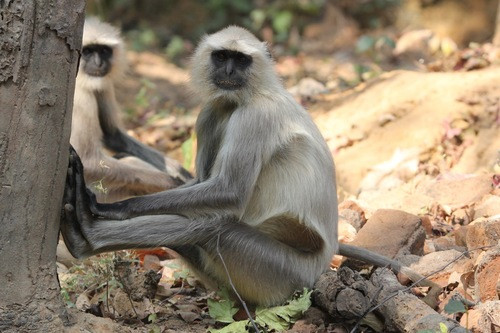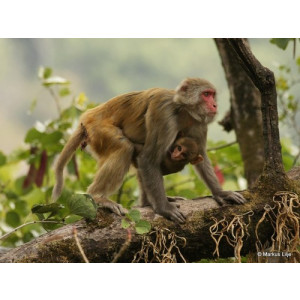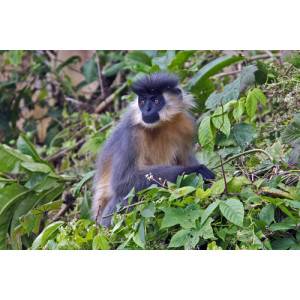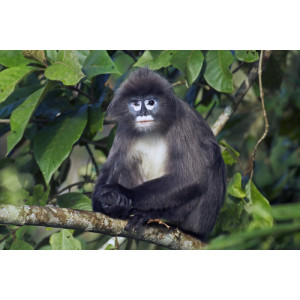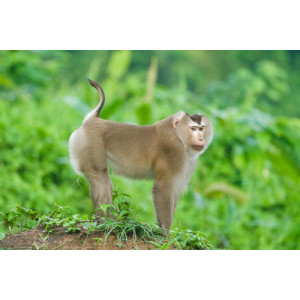Northern Plains Sacred Langur Did you see this animal?
Scientific Name : Semnopithecus entellus
Family : Cercopithecidae
Order : Primates
Class : Mammalia
Phylum : Chordata
Other Name : Common langur, Hanuman Langur, Grey Langur, True Langur
Habitat : Forest, Savanna, Shrubland
Description : Common Langurs are medium-sized primates, with males weighing up to 18 kg (40 lb) and measuring up to 75 cm (30 in) in length, while females are smaller, weighing up to 11 kg (24 lb) and measuring up to 60 cm (24 in) in length.
They have a gray or brown coat with a black face and hands, and a long, thin tail that can measure up to twice their body length.
Common Langurs are arboreal and spend most of their time in trees, though they also come down to the ground to forage. They are social animals and live in groups of up to several dozen individuals, with males and females occupying different social roles.
They are primarily herbivores, feeding on leaves, fruits, and flowers, but also eat insects and occasionally small vertebrates.
Common Langurs are found in a variety of habitats, including forests, grasslands, and urban areas. They are adaptable and can live in both tropical and subtropical environments.
Females typically give birth to a single offspring after a gestation period of around 200 days. Young are weaned after 6 to 12 months, and reach sexual maturity between 3 and 5 years of age.
Common Langurs are considered sacred in Hinduism, and are often seen in temples and other religious sites. They are also sometimes kept as pets, though this practice is illegal in many areas.
They have a gray or brown coat with a black face and hands, and a long, thin tail that can measure up to twice their body length.
Common Langurs are arboreal and spend most of their time in trees, though they also come down to the ground to forage. They are social animals and live in groups of up to several dozen individuals, with males and females occupying different social roles.
They are primarily herbivores, feeding on leaves, fruits, and flowers, but also eat insects and occasionally small vertebrates.
Common Langurs are found in a variety of habitats, including forests, grasslands, and urban areas. They are adaptable and can live in both tropical and subtropical environments.
Females typically give birth to a single offspring after a gestation period of around 200 days. Young are weaned after 6 to 12 months, and reach sexual maturity between 3 and 5 years of age.
Common Langurs are considered sacred in Hinduism, and are often seen in temples and other religious sites. They are also sometimes kept as pets, though this practice is illegal in many areas.
Distribution in Bangladesh
References:
description written by: Asad U. Tanvir, Department of Zoology, Jagannath University, Dhaka; reviewed by: Muntasir Akash, Department of Zoology, University of Dhaka; Taxonomic Checklist: Red List of Bangladesh Volume 2: Mammals, 2015, IUCN; information sources: iucnredlist.org, Khan 2018 (Photographic guide to the wildlife of Bangladesh); photo credit: Md Shalauddin (Jagannath University, Dhaka), photo copyright: iNaturalist. For more information please contact with us.
description written by: Asad U. Tanvir, Department of Zoology, Jagannath University, Dhaka; reviewed by: Muntasir Akash, Department of Zoology, University of Dhaka; Taxonomic Checklist: Red List of Bangladesh Volume 2: Mammals, 2015, IUCN; information sources: iucnredlist.org, Khan 2018 (Photographic guide to the wildlife of Bangladesh); photo credit: Md Shalauddin (Jagannath University, Dhaka), photo copyright: iNaturalist. For more information please contact with us.
